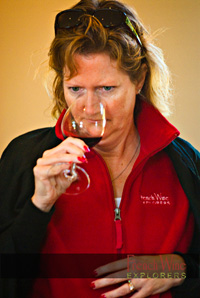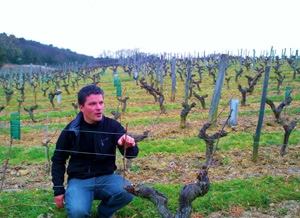Wine Tours in France: How They Help Decode Terroir
When you are on a wine tour in France and visit a fine wine estate, and the winemaker tells you something of the subsoil, climate and location of the estate, he is talking about terroir. The word probably comes from the French word terre, meaning earth, but now it means much more. The French have observed over many centuries that certain grape varieties grow best in certain regions, and within those regions, there is a hierarchy of plots of land where the best wine is produced. From this concept flows the entire idea of appellations d’origine contrôllées (AOC).
I first became acquainted with the term in Bordeaux. The famous Château Ausone in St. Emilion is very costly, while its neighbor, Château Berliquet, far less so. Berliquet has a southwestern exposure, jutting out a bit towards the plain, exposing its acreage to the elements, while shielding its neighbor Ausone. I have always been fond of Berliquet, but a trick of geography, of terroir, limits its potential.
In both St. Emilion and Burgundy, the concept of terroir has been refined to include topography, so that vineyards on slopes with a southeastern exposure are preferred (good sunlight, wind protection, and natural irrigation). It is also said in Burgundy that vineyards closer to the summit of the hillside are preferred (famously at the Clos d
All of this is disputed by those who hold that the science of wine making – of blending grapes and adjusting fermentation – can produce excellent wines, even when the grapes are not from parcels of land in celebrated AOC regions. This is the garagiste theory, which holds that wines can be well made by skillful persons even in a garage. I for one do not believe it.
For proof, during a recent tasting of five Domaine Jacques Prieur white Burgundy wines from the 2008 vintage at Mills Wine in Annapolis, Maryland, the winemaker, Nadine Gublin, emphasized the terroir of the wines via SKYPE connection from Burgundy as we tasted them.
Next came a premier cru Meursault Santenots ($88), which was “much more focused, refreshing, with depth.” This was a distinguished wine, from the Domaine Prieur’s half acre
 rn edge of Meursault, the vines facing east. The premier cru Les Combettes from storied Puligny Montrachet came next ($120), and it was “wonderful, some spicy notes, must age.” This 3.7 acre plot of Puligny Montrachet has “an ideal southeast facing exposure,” with mainly clay and limestone subsoil. It was a worthy sample from the world’s most famous Chardonnay vineyards.
rn edge of Meursault, the vines facing east. The premier cru Les Combettes from storied Puligny Montrachet came next ($120), and it was “wonderful, some spicy notes, must age.” This 3.7 acre plot of Puligny Montrachet has “an ideal southeast facing exposure,” with mainly clay and limestone subsoil. It was a worthy sample from the world’s most famous Chardonnay vineyards.Finally we were treated to the grand cru Corton Charlemagne ($200). The half acre Domaine Prieur vineyard is in the vineyard “sweet spot” in the center of the hillside, which is sloping and faces due east. Madame Gublin added that the very chalky vineyard confers an intense mineral quality to the wine. I thought that expectation was exceeded, and that with time, a richness would emerge. As of the tasting, I found the wine to be “a grand vin, bold, very full.”The wine is “built for the long haul,” which our hostess said meant cellaring for ten years.
William S. Shepard, Wine Editor
Burgundy Wine Tours- 15 Miles of Heaven
Champagne Wine Tours- the Best Way to Demystify Styles and Vintages
Copyright ©2011 French Wine Explorers

